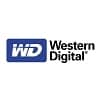 WD has announced that it will demonstrate the “world’s fastest” 4TB hybrid drive at the SATA-IO booth (#205) during Storage Visions 2015 on January 4 to 5. WD’s prototype drive features the SATA Express PCI-e interface, a 4TB 3.5-inch hybrid hard drive form factor, and up to 128 GB SSD, and is designed with a heavy focus on performance and GB-per-dollar solutions for desktop and gaming applications.
WD has announced that it will demonstrate the “world’s fastest” 4TB hybrid drive at the SATA-IO booth (#205) during Storage Visions 2015 on January 4 to 5. WD’s prototype drive features the SATA Express PCI-e interface, a 4TB 3.5-inch hybrid hard drive form factor, and up to 128 GB SSD, and is designed with a heavy focus on performance and GB-per-dollar solutions for desktop and gaming applications.
WD has announced that it will demonstrate the “world’s fastest” 4TB hybrid drive at the SATA-IO booth (#205) during Storage Visions 2015 on January 4 to 5. WD’s prototype drive features the SATA Express PCI-e interface, a 4TB 3.5-inch hybrid hard drive form factor, and up to 128 GB SSD, and is designed with a heavy focus on performance and GB-per-dollar solutions for desktop and gaming applications.
The two WD SATA Express interface demonstrations at Storage Visions 2015 will consist of commercially available motherboards from ASRock and Gigabyte. In addition, both of these systems will demonstrate cabled SATA Express PCI-e interconnect flexibility and configuration options for single-volume caching and RAID.
WD indicates that heavy desktop use cases will benefit from larger cache sizes (64 GB will be demonstrated) due to retention of key hot data across multiple applications. As a result, users will notice improved overall performance. WD’s SATA Express 4TB drive with 64GB cache reached a PCMark8 benchmark score of 4459 in the company’s labs. This claimed result is close to SSD performance coupled with an optimized GB-per-dollar value.
WD released few other details about this prototype solution so it’s a bit unclear how they intend to leverage the SSD portion of the drive. In the past they have kept the flash and HDD separate, as with the Black2 2.5″ drive. That solution however requires a special driver and has very limited OS support. The 4TB hybrid solution sounds more like it’s using the flash as a cache, along the lines of what Seagate and Toshiba have done prior. In those cases the cache is managed within the drive, without a need for additional software. Hybrid hard drives haven’t had great market success however so it remains to be seen if WD has the right mixture with this prospective drive to provide a mix of performance, capacity and cost that consumers will rally around.
